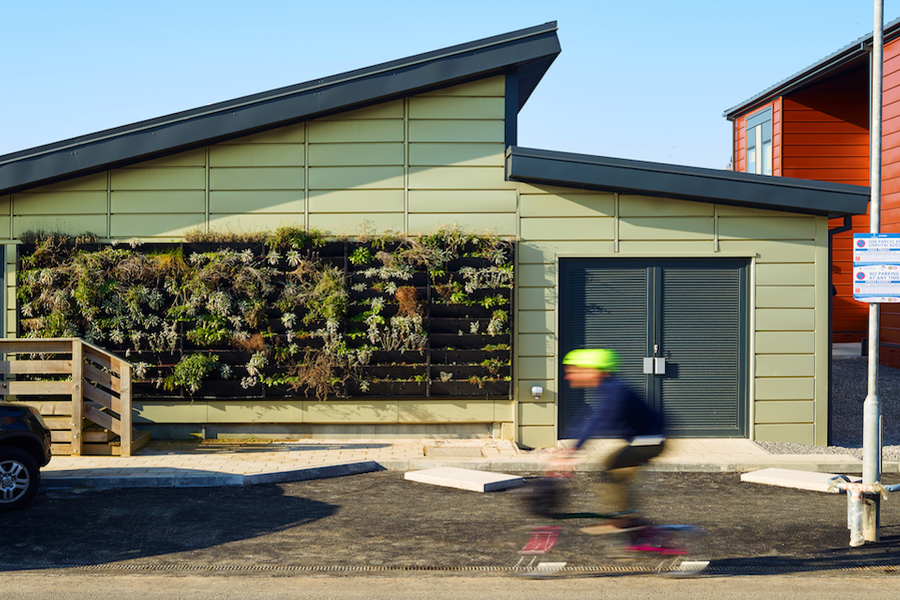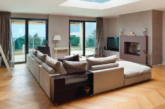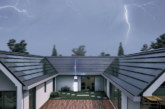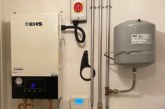David Bowen, CTO & Founder, Logicor, outlines how homes of the future could not only be highly energy efficient, but also produce and store energy.
The pressure is on to find effective, cost-efficient solutions to support government’s ambition of achieving net zero carbon emissions by 2050. All sectors and industries are being encouraged to adopt a sustainable approach. This is especially the case in the residential sector, which in 2018 was responsible for 18% of the UK’s CO2 emissions.
Emissions levels produced by the residential sector vary yearly depending on external temperatures, when extreme weather events and climate change are shining a glaring spotlight on our built environment’s lack of future proofing. I believe now is the time to give serious thought to both how we can safeguard our buildings while also reducing their carbon footprint.
Over the last two decades, we’ve seen a growing enthusiasm for Passivhaus, with its emphasis on energy efficiency, air quality and comfort. I think it’s time to take this a step further to consider how our homes can work harder to actively produce and store energy.
Countless sustainable products and systems are available to housebuilders, but these are often regarded in isolation of each other. I’d like to take this opportunity to look at what it might look like if we brought these together to create ‘the home of the future’.
Resources for courses
Energy efficiency is two-fold: we need to design houses not only to conserve, but also generate and store energy for later use. Since minimising heat loss relies on the airtightness of the shell, this a good place to start.
Government backed think tank The Active Building Centre is demonstrating effective integration of renewable technologies for the residential environment. A crucial part of their work is the advocating of Structurally Insulated Panels (SIPs). Consisting of multiple layers of different materials, these can be preassembled to reduce the number of cuts and joints where warm air can be lost.
Of course, windows should have a low U-factor and solar heat gain coefficient (SHGC). However, technology is now available which makes windows an even stronger team player in the ‘active home’. Photovoltaic (PV) glass, for instance, is a transparent version of solar panels, absorbing sunlight to generate electricity.
Thermochromic windows offer specifiers another option. Embedded with a polyvinyl butyl (PVB) layer, this special glass helps regulate solar radiation gain. Much like self-tinting sunglasses, the panes become darker the more directly sunlight is hitting it. Interiors continue benefitting from natural light without the heat and glare.
Taking charge
An active building is, by definition, one which harnesses solar power to generate and store its own electricity. This relies on key components both inside and out.
The Active Building Centre has made effective use of solar walls and a solar roof to help create heat and electricity. Comprised of perforated steel panels, the solar walls can collect solar heat energy by heating the air on the steel surface, then drawing in the warm air through the perforations. This helps power the heat pump to provide hot water.
The rooves of their test buildings was fitted with solar panels, but not as you may know them. Lightweight and flexible, these panels are laminated onto the roofing material. Depending on the surface area, a solar roof can provide produce over 50% of a home’s required energy, which can be used immediately to power appliances and systems, or be stored for later use.
To reap the benefits of solar roofs or PV glass, active homes should be fitted with a home energy storage system to retain excess energy generated during the day.
Current affairs
Internally, while heat pumps are one option to reduce homeowners’ reliance on gas boilers, crucially as they are phased out by government, there’s an opportunity to embrace other electric alternatives.
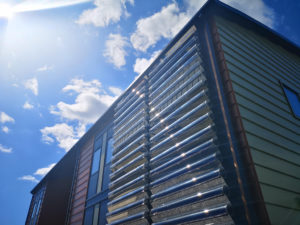 Infrared heating systems offer a more sustainable solution. Rather than transferring heat, infrared transfers energy, acting on a mass to turn it into a heater itself. It works like sunlight, without the ultraviolet. For example, when confronted with an infrared emitter, a room gets warm when it has absorbed as much energy as it can. When you turn the heater off, the walls emit the stored heat, like a sponge being squeezed of water. This effect can last up to nine hours.
Infrared heating systems offer a more sustainable solution. Rather than transferring heat, infrared transfers energy, acting on a mass to turn it into a heater itself. It works like sunlight, without the ultraviolet. For example, when confronted with an infrared emitter, a room gets warm when it has absorbed as much energy as it can. When you turn the heater off, the walls emit the stored heat, like a sponge being squeezed of water. This effect can last up to nine hours.
Given the right mix of technology, it is entirely possible to create a truly low carbon heating solution. For example, we are tantalisingly close to combining infrared systems with solar generation and battery storage.
Future dwellings will also see home charging points for electric cars, making them a more viable option for the eco-conscious homeowner. Indeed, as it becomes a more sustainable option, electricity isn’t going away any time soon (or rather, it’s going a great many places!).
Resistance is futile
The homes of the future aren’t nestled in the clouds, only accessible via flying cars. In fact, superficially, they don’t look so different to what we live in today. However, behind the scenes, a network of innovative, sustainable technology will be harnessing the elements to create energy positive abodes.
The benefits will be palpable. As energy consumption is reduced, savings on bills increase. And inside the comfort of your home, the air and temperature will be well regulated, maintained with clean, renewable energy. As for the bigger picture, the same technologies can be adapted for commercial and industrial use, leading to great reductions in CO2 emissions throughout the UK.
There is a lot of work to be done to educate the public on the long term value of electricity and what are, for now, regarded as non-traditional materials. However, it’s an exciting opportunity for housebuilders and developers to influence a much needed sea change in the industry, and one which will pay dividends.


